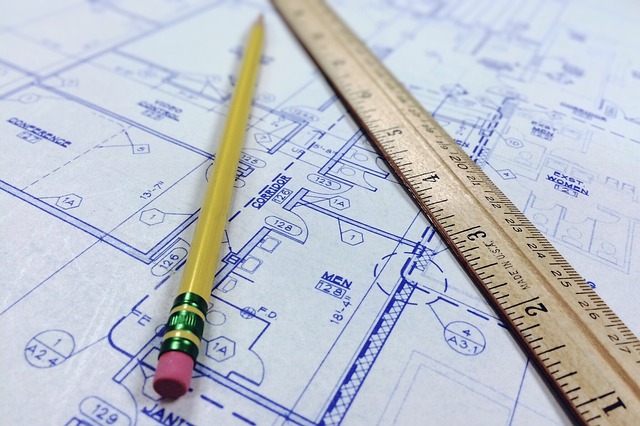Architecture and the need for innovation
Creating architecture is a role that has continually evolved.
Historically, design and construction were typically undertaken by the local artisan, and it wasn't until the 18th century that the role of the 'architect' diverged from that of a craftsman.
In the early-19th century the Institute of British Architects was formed in London to promote and direct the education of architects. It was later renamed the Royal Institute of British Architects (RIBA) and it still operates under that name today, alongside other architectural institutes such as the Chartered Institute of Architectural Technologists (CIAT).
One way or another the role of the architect has had to change in relation to industry innovations. The introduction of the pencil in the late 16th century along with the earlier introduction of paper in Europe allowed for the production of pre-construction drawings. Later, the specialisation of the trade led to innovations around the drawing board such as the introduction of parallel motion, but the availability of personal computers and the advent of computer aided design (CAD) has subsequently led to their demise. Today the majority of drawings are drafted using polylines and layers as opposed to pens and razor blades.
Architects have always seen change as an opportunity. This can be seen in the evolution of the role and its migration to the T-shaped professional model, where the architect is no longer solely a master of their own profession, but knowledgeable about other construction design professions, document control procedures, CAD management, the build and installation process, and more recently data analysis and software application development.
Now with the introduction of efficiency gains and automation brought about through the application of the Building Information Modelling (BIM) process, architecture has another opportunity to innovate, if sufficient leadership can be demonstrated.
Work by BRE Academy, in collaboration with CIAT, the Construction Industry Training Board (CITB), the Institute of Environmental Management and Assessment (IEMA), and Ecobuild, has demonstrated a skills gap within the industry around technology and digital aspects of design and construction, with BIM and smart technology skills identified as those most in need. The survey suggests that architectural professionals who excel at data analytics and software development may be early adopters of the professions future profile. However, there is a conflicting view.
Within the construction industry, architectural roles have always been the most 'human', dealing with relationships, negotiations, and active listening. Indeed, research by the World Economic Forum identifies these traits as among the most desirable skills for future professionals including; complex problem solving, critical thinking, creativity, people management, and coordinating with others. Due to its mastery of such skills, the role of the architect or technologist has been identified by the BBC as highly unlikely to be automated.
So then there is a decision to be made: when considering the future role of the architectural professional within construction, should it move towards the 'man', or the 'machine'?
This article was created by --BRE Buzz. It was taken from Embracing innovation in architecture by Dan Rossiter, published in April 2016.
[edit] Related articles on Designing Buildings Wiki:
- Architect.
- Boardroom to building site skills.
- BRE articles on Designing Buildings Wiki.
- Computer aided design CAD.
- Government plans to put UK at front of global innovation race.
- How to become an architect.
- Skills shortages lead to wages rise.
- Shaping the Future of Construction: Inspiring innovators redefine the industry.
- RIBA.
- The architectural profession.
Featured articles and news
One of the most impressive Victorian architects. Book review.
RTPI leader to become new CIOB Chief Executive Officer
Dr Victoria Hills MRTPI, FICE to take over after Caroline Gumble’s departure.
Social and affordable housing, a long term plan for delivery
The “Delivering a Decade of Renewal for Social and Affordable Housing” strategy sets out future path.
A change to adoptive architecture
Effects of global weather warming on architectural detailing, material choice and human interaction.
The proposed publicly owned and backed subsidiary of Homes England, to facilitate new homes.
How big is the problem and what can we do to mitigate the effects?
Overheating guidance and tools for building designers
A number of cool guides to help with the heat.
The UK's Modern Industrial Strategy: A 10 year plan
Previous consultation criticism, current key elements and general support with some persisting reservations.
Building Safety Regulator reforms
New roles, new staff and a new fast track service pave the way for a single construction regulator.
Architectural Technologist CPDs and Communications
CIAT CPD… and how you can do it!
Cooling centres and cool spaces
Managing extreme heat in cities by directing the public to places for heat stress relief and water sources.
Winter gardens: A brief history and warm variations
Extending the season with glass in different forms and terms.
Restoring Great Yarmouth's Winter Gardens
Transforming one of the least sustainable constructions imaginable.
Construction Skills Mission Board launch sector drive
Newly formed government and industry collaboration set strategy for recruiting an additional 100,000 construction workers a year.
New Architects Code comes into effect in September 2025
ARB Architects Code of Conduct and Practice available with ongoing consultation regarding guidance.
Welsh Skills Body (Medr) launches ambitious plan
The new skills body brings together funding and regulation of tertiary education and research for the devolved nation.
Paul Gandy FCIOB announced as next CIOB President
Former Tilbury Douglas CEO takes helm.
























